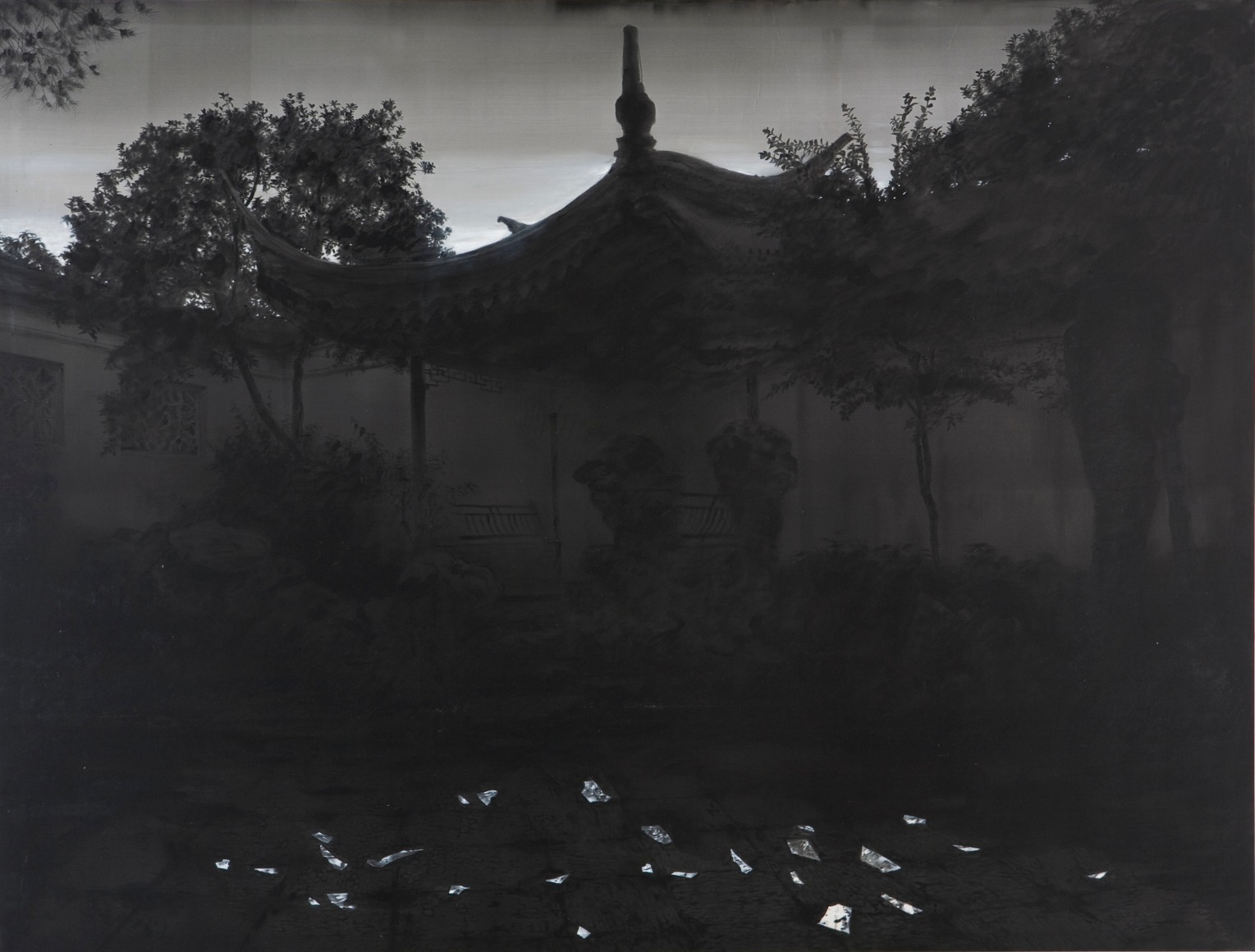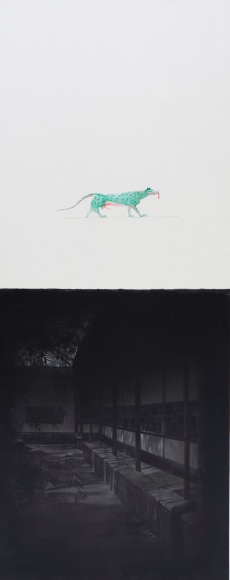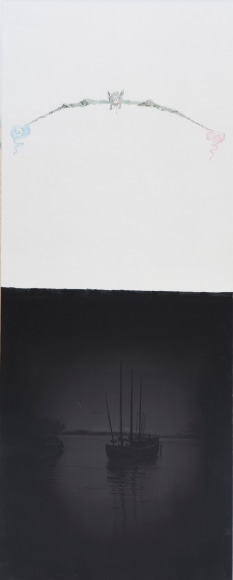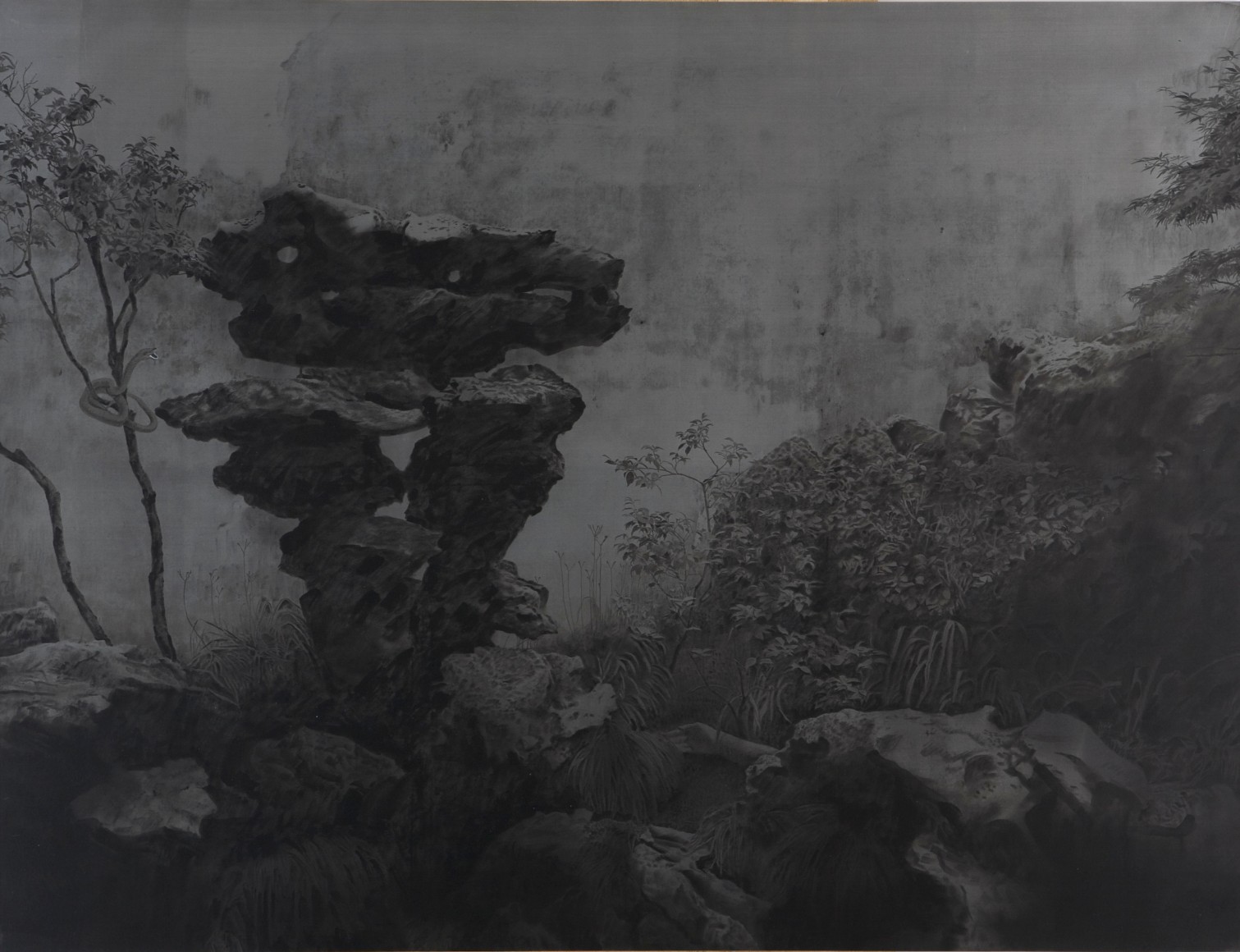Chambers Fine Art Beijing announces the opening on August 30 of Seasons: Hong Lei’s Recent Works. Born in Changzhou, Jiangsu Province in 1960, Hong Lei graduated from the Nanjing Academy of Art in 1987. Abandoning oil painting in the mid-1990s, he turned to photography as a medium for the exploration of a wide range of cultural issues. Among the images that first attracted international attention were Autumn in the Forbidden City (West Veranda), 1997 and Chinese Landscape (Zhuozheng Gardens), 1998, views of the supreme symbol of Imperial power and a traditional Chinese garden suffused with ominous washes of red pigment.
As familiar with the great cultural achievements of the Song Dynasty as he was with the latest photographic techniques, Hong Lei continued his investigations by recreating the former in terms of the latter. In works such as After Song Dynasty Circle Series, 2000 and After Song Dynasty “Sakyamuni Coming out of the Mountains” by Liang Kai, 1998, the camera lens is unsparing in its recording of the troubling aspects of the subject matter, a dead bird in one of the images from the Circle Series and the disheveled, un-idealized figure of Sakyamuni.
After the success of his two exhibitions at Chambers Fine Art New York – Hong Lei’s Narrative, 2003 and Transmitting the Ancient, 2006 - Hong Lei makes his debut at Chambers Fine Art Beijing with an installation that occupies the entire space of an exhibition room. Just as in the past he has contrasted an idealized past with a corrupt and degenerate present, he will now contrast the raw materials of his creations in the West Gallery with the distillation of his experiences in a series of fifteen new embroidery-paintings in the East Gallery. Each of the works consists of two panels, a white silk panel embroidered with symbolic animals and human forms above black toned oil paintings based on photographs of Chinese gardens on silk. The exploration of different media in this exhibition – besides Hong Lei’s landmark embroidery are also painting and installation – will mark a new stage in the artist’s career.
纽约前波画廊将于2009年1月8日起举办展览《节气:洪磊近作》。洪磊于1960年出生于江苏省常州市,并于1987年毕业于南京美术学院。九十年代初,他放弃了油画,转向摄影,并以此为媒介探索了一系列社会和文化问题。他所创作的作品中,最早得到国际承认的包括《紫禁城的秋天》(1997)和《中国风景》(1998)。前者采用了象征终极皇权的图像符号,而后者则以红色铺天盖地的侵蚀了中国的传统园林。
洪磊不仅对宋代的文化成就有深入的了解,还对现代摄影技术有充分的掌握。他用后者的技术来重现前者的画面。在《山水》系列(2000)及《仿梁楷〈释迦出山图〉》中(1998),摄影镜头毫不留情的将所表现主题中让人不安的一面纪录了下来——一只死鸟占据了图像的正中心;释加摩尼身穿凌乱的袈裟,眼神充满了惊恐。
继在纽约前波画廊的两次成功展览之后——《洪磊的江南叙事》(2003)和《传移摹写》(2006)——洪磊这次将展出最新创作的作品,即以自己拍摄的园林为图像的绘画。展出的三件大型绘画中(丝绸、丝绸颜料),黑色使画面显得神秘,而艺术家在画面中加入的微妙细节则打碎了原本宁静的气氛。展出的另十五件作品均以节气名称命名,并将绣有怪异动物和植物图案的白色丝绸与基于中国传统园林的黑色绘画并置。
在他过去的创作生涯中,洪磊基本上放弃了绘画这种媒体,但同时他又在不停的扩大自己的创作语言。虽然这次展出的新作品在题材上与以前关系密切,但同时也体现出艺术家对各种视觉和技术表现方式的把握。他成功的将曾经单独使用过的媒体相结合——绘画、摄影、刺绣——不但保持了自己创作中原有的细腻,并给我们带来了一组使人悚然的作品。




